Word on the street > AE Industry Intelligence: Issue 83
AE Industry Intelligence: Issue 83

In This Issue
A/E Workplace In 2021 Thanksgiving Leftovers Four Factors to Watch
The A/E Firm Workplace In 2021: Just Don’t Say “Required”
Leadership teams across the country are trying to figure out the optimal workplace model for their firms. What’s the right blend of physical in-person and digital engagement—or phygital? To do this, they’ve been interpreting mixed signals from government agencies; gauging the hopes and concerns of their employees; guessing which options to offer new recruits; taking direction from their clients; looking for clues from their firm’s KPIs; prioritizing the health of their employees; and walking a political tightrope.
The result? An almost infinite patchwork of workplace models from coast to coast. Long gone are the days of everyone in the office for 40 (really 50) hours a week. Every leadership team is endeavoring to craft a model that captures the best of their pre-pandemic culture and marry it with today’s post-pandemic set of circumstances. For an industry that both values and champions data-driven decision making, leadership teams across the country are making these decisions in a largely data-free way. There’s no dataset or role model for what “works” today. The largest industry firms—typically role models for “best practices”—are operating in a stiflingly bureaucratic nightmare universe of federally mandated regulations that render their workplace models largely irrelevant to most other industry firms. So each leadership team is landing on a workplace model that is unique to their firm.
Here are just a few of the different types of workplace models and associated dynamics at play across the A/E industry in 2021. I can say with 100% confidence that all of these will change over the next 12 months. For an industry in which the biggest challenge is finding and keeping talent, the stakes are high for each and every leadership team. Employees are voting with their feet. Get your workplace model right, and encourage (be careful not to “require”) your people to market it hard via social media to attract and retain talent. Get the model wrong, and watch your competitors accumulate the talent you need.
From pole to pole and everywhere in between: At one end of the spectrum, we see firms that look almost exactly like they did in January 2020. Most all of their employees are in the office with zero mask-wearing, and they have no pandemic-driven office reconfigurations. While the world around them has changed, their business models have largely remained the same. At the opposite end, there are firms in which the vast majority of office staff are still remote, with their leadership teams affording employees 100% flexibility on how/when they do their work. Most firms, however, fall between these two models.
Hybrid models and mixed results: There are firms embracing a hybrid workplace model in which the leadership teams are loving the results. Not just the reduction in wasteful expenses (inter-office travel and all its associated costs), but also increased employee happiness and improved financial performance. At the same time, there are firms in which the leadership teams have growing concerns about how their hybrid model is negatively impacting everything from project performance to professional development.
Much like Voldemort, whose name is not to be spoken: There are firms in which the following words have completely and mysteriously disappeared from the lips of their leadership teams: “required,” “mandated,” “must,” and “directed.” It’s as if these leadership teams are unwilling to provide clear policy directions for fear of alienating any of their employees. The problem with this approach is that many other employees want clear directions.
In the words of Benny and Björn: “Money, money, money.” Lots of firms are providing financial incentives to their employees to return to the office, including monthly bonuses. Also on offer: free lunches, “happy hours,” free parking, and dedicated office spaces. Firms are retooling their benefits packages fast to keep up with the associated changing needs of their workforce. You get the idea: “Come on down!”
Is this any way to run an A/E firm?! The variety of hybrid models in play boggles the mind. For your consideration, here are some: firms in which 30% to 40% of employees are in the office one to two days per week; firms with everyone in the office just three days a week; firms with 50% of staff in the office and 50% fully remote; firms that are 90% remote (with no plans to come back); firms with 20% of staff in the office every day with the balance remote; firms in which leadership literally does not know what percentage of staff are in the office (nor do they have a benchmark); firms in which employees are encouraged to be in the office two days—of their choosing—a week; firms with 95% of staff back in the office (a plot line similar to HBO’s The Leftovers); firms in which employees have the choice to work from home on a single designated day (I call this the “2019 model”); firms with 75% of employees working in the office at least one day of the week; firms with offices open but encouraging employees to work remotely; firms with less than 50% in the office. You get the picture—there is no trend. Just every firm trying to find their way with no playbook in a high-stakes environment.
Federal dollars rule: There’s a special pain for those firms that are precisely adhering to the seemingly ever-changing, never-clear federal government requirements on workplace protocols. Their leadership teams are frustrated with the lack of clarity and the resulting angst among their managers and employees.
Masks for some, not for others: For those firms with some or all of their employees back in the office, the internal dynamics are also all over the map. In some, only unvaccinated employees are asked (not required) to wear masks when not at their desks or in common areas, including conference rooms. In others, all employees (vaccinated or not) are subject to mask requirements.
Pilot programs: Two days in the office is a common approach for firms to dip their toes back into the physical world. Many firms have started their hybrid journey by “encouraging” (remember, not “requiring”) employees to be in the office two days a week. Leadership teams are relying on managers and employees providing feedback on what “feels right” and what “works well” to figure out the next steps. Some are moving to three days per week or more. Some are stuck at two.
Work like you’re booking an online tee time: Many firms are connecting the number of days employees spend in the office with the space that will be dedicated or available to them. In some cases, a minimum number of days in the office is required for a dedicated space. If employees do not meet the minimum number of days, then they must “reserve” space in blocks of time (hours, half-days, days) depending on the specific work needs. In some firms, tenure or title gets priority reservation privileges—they can reserve their place a week in advance. In others, it’s a free-for-all—spots open up at midnight for everyone to compete. It’s like booking a tee time online at a semi-private golf course—membership has its privileges and gets the morning tee times—everyone else gets to scramble for the twilight rates and maybe get 14 holes in before it gets dark.
The new “land grab” and the end of the “pack rat”: Many firms are downsizing their office footprints resulting in smaller offices. In some cases they’re using pre-pandemic network usage data to assess in-office occupancy and planning accordingly. (I’m not convinced this is the right baseline.) Managers are looking to maximize the space allocated to their teams (which is a euphemism for maximizing their own personal space—but that’s a different article titled “Where has all the Level Five leadership gone?”) in a shrunken physical world in which it’s still unclear what will happen with their office space in the future. This is bad news for “pack rats” (generally boomer professionals) who have spent a career accumulating three-ring binders that have been left unopened for at least five years but look fabulous on shelves.
Working al fresco: Those firms with offices in warmer climes are maxing the use of any outdoor spaces in their office configurations compared with pre-pandemic days. It’s a simple but powerful tactic for them to deploy to assuage fears of folks who are concerned about time spent indoors. (I know this is a tough point for our Canadian readers to see.)
Zoning requirements: Firms are reconfiguring their offices according to the type of work being done or type of environment being encouraged—like internal zoning requirements. Some of these include: Zone 1 (private offices with closed doors with “do not disturb” on them) for those “I’m here to get away from my mother-in-law who is staying with us because she sold her house for $1.2 million, and I need peace and quiet to concentrate, so leave me alone” professionals. Zone 2 (open-door offices) for the “Hey, let’s engage like it’s 2019; I’m here to work, but I’m also up for a lot of discussion about Succession and Adele’s new album” set. Zone 3 (conference rooms, open spaces) for the “Let’s get into a semi-circle around this white board and charrette this thing already” gang. Zone 4 (boardroom) for the execs who need to fly in from various locations for a one-and-a half-day meeting that every single one of them knows could take place on Zoom just as efficiently.
Don’t turn your back on the camera: Firms are gradually realizing that “collaboration” between teams that are on premises (or “on prem” as your tech vendor likes to call them) and folks who are remote requires a different approach. Far too often the on prem teams collectively turn their backs on the camera to huddle, leaving the remote brain trust out of the loop. Epic fail in terms of facilitating actual collaboration and engendering a “one-team” dynamic.
When geography is NOT destiny: Stunningly, there are firms in the same city doing the same type of work (architecture, structural engineering, etc.) operating with completely different workplace approaches. It’s not unusual to find one firm with 60% of its employees back in the office in the same city, where across the Bay (there’s a hint) its competitor is still 90% remote. Makes for interesting choices for employees who are considering which work model fits best with their families’ circumstances.
What does this all mean? If you are in the market for talent (and who isn’t?), one of your key offerings is your workplace model. In the past you pretty much had the same model as your competitor for that talent. Today, your workplace offering is unique. It’s a huge opportunity for you to strengthen your bond with your existing employees and encourage new employees to join you. Use it well.
Industry M&A up 33%: A remarkable year for industry consolidation continued last week with three more domestic deals announced.
M&A Symposium Livestream now available: Want to catch up on the latest M&A trends and deal multiples? Would you like to know post-pandemic best practices for buyers, sellers, and integrators? You can have it all by purchasing a recording of our recent Texas M&A Symposium. Click here to find out how.
Southeast States M&A Symposium is heating up! Interested in growing through acquisition in the Southeast? Or are you based in the Southeast and considering a merger or sale? Or would you like to have a business-justified reason to spend a long weekend in Miami this January (average temperature for the month is 74 degrees) to better understand how M&A can benefit your business? If you answered “yes” to one or more of these questions, our Southeast States M&A Symposium in Miami, Florida, is for you! Register today to reserve your place.
Questions? Insights? What workplace models or dynamics are you seeing? Email Mick Morrissey at [email protected] or call him at 508.380.1868.
Thanksgiving Leftovers
Welcome back, folks. By now you’ve worked leftover turkey, stuffing, potatoes, and other rapidly aging Thanksgiving fare into soups, sandwiches, casseroles, and the lunchboxes of unsuspecting children. The good pies are long gone, but the folding chairs and the extra leaf for the dining room table remain in plain sight.
Also left over are the fleeting memories of a Thursday stuffed with football. You laughed. You cried. You experienced the full gamut of emotions—especially if you placed a wager or two. But worry not, for I have more football leftovers for you to chew on long after the last plastic container of gravy is consumed. What are these Thanksgiving leftovers that refuse to go quietly into the trash, you ask? Why, they are insightful, timeless quotes from some of the winningest NFL coaches in the league’s history—as well as the lessons they offer for A/E firm leaders. Enjoy!
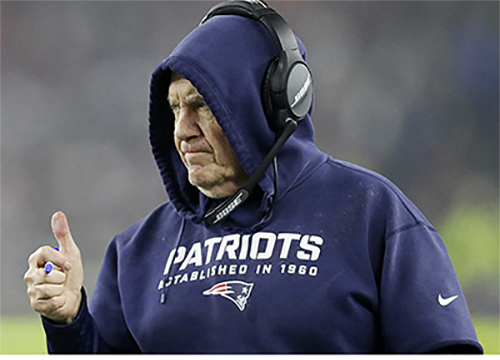
Bill Belichick. The New England Patriots head coach is a six-time Super Bowl champion (eight if you count the rings he received as defensive coordinator for two of the New York Giants Super Bowl victories). Known for his bubbly personality, he is a favorite of football fans across the country (and yes, that’s sarcasm).
Quote: “Mental toughness is doing the right thing for the team when it’s not the best thing for you.”
Lesson: While you have your own agenda (everyone does), don’t let it drown out the cries of the team.
Quote: “If you sit back and spend too much time feeling good about what you did in the past, you’re going to come up short next time.”
Lesson: Innovate or suffer the consequences. Client needs evolve, so continuously go to market with what they can’t get anywhere else.
Quote: “To live in the past is to die in the present.”
Lesson: Our industry is changing faster than we’ve ever experienced. If you cling to pre-COVID ways of doing things, you’ll lose.
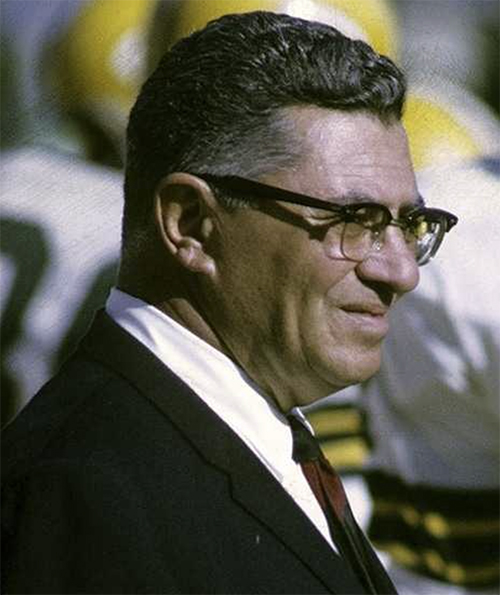
Vince Lombardi. Lombardi, for whom the NFL championship trophy is named, was the head coach of the Green Bay Packers during the 1960s. His Packers won three straight and five total NFL championships in seven years, in addition to winning the first two Super Bowls in 1966 and 1967.
Quote: “Perfection is not attainable, but if we chase perfection we can catch excellence.”
Lesson: Always challenge the status quo, and strike the term “because that’s the way we’ve always done it” from your firm’s vocabulary.
Quote: “Winning is not a sometime thing; it’s an all-the-time thing. You don’t win once in a while; you don’t do the right thing once in a while; you do them right all the time. Winning is a habit.”
Lesson: Fundamentals take hold when leadership gets behind them. Otherwise, company processes and systems decay.
Quote: “To me, a leader is a visionary that energizes others. This definition of leadership has two key dimensions: a) creating the vision of the future, and b) inspiring others to make the vision a reality.”
Lesson: Embrace your highest and best uses, and delegate authority, not just action, so people can grow and contribute to your firm’s vision.
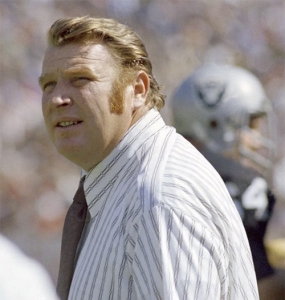
John Madden. The former Super Bowl-winning coach was perhaps best-known as a color commentator for NFL telecasts. In 2006, he was inducted into the Pro Football Hall of Fame in recognition of his coaching career. He is also widely known for the long-running Madden NFL video game series he has endorsed and fronted since 1988.
Quote: “Coaches have to watch for what they don’t want to see and listen to what they don’t want to hear.”
Lesson: We can be helpful when we give each other negative assessments. We let ourselves and each other down when we keep quiet.
Quote: “Knowing his coach likes him is more important to a player than anything else.”
Lesson: People are well-intentioned and do the best job they can, given what they know at the time, their skills and abilities, the resources available, and the situation at hand. Understanding and truly believing that knits the fabric of a firm together.
Quote: “The fewer rules a coach has, the fewer rules there are for players to break.”
Lesson: Opt for responsible autonomy over command and control. Responsible autonomy means we trust our professionals to use their autonomy responsibly. We understand that we don’t give people autonomy because people are already autonomous.
Quote: “Here’s a guy who can use his arms and legs at the same time.”
Lesson: No lesson. It’s just one of Madden’s many funny quotes.

Paul Brown. Brown was both the co-founder and first coach of the Cleveland Browns (named after him) and assisted in founding the Cincinnati Bengals. His teams won seven league championships, and he is credited with such innovations as using film to scout opponents, testing players’ knowledge of the playbook, and the modern facemask. He also played a role in breaking professional football’s color barrier, bringing the first African-Americans to play pro football in the modern era onto his teams.
Quote: “You can learn a line from a win and a book from a defeat.”
Lesson: Use defeats to create competitive advantages.
Quote: “You just never know what’s around the next corner in life or business or anything.”
Lesson: The future is unknowable, so reductionist (breaking a system down into smaller component pieces to understand it), deterministic (a + b always results in c) approaches don’t work for growing a firm and leading people. Those feats require trial and error—it’s how all cognitive learning happens.
Quote: “The test of a quarterback is where his team finishes.”
Lesson: It’s not about you.
Quote: “If you think you have a good idea, get into the marketplace as quickly as you can, using as little money as possible, and see what happens.”
Lesson: Try things and learn.
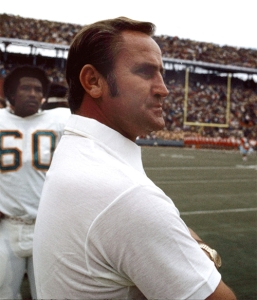
Don Shula. The head coach of the Miami Dolphins for most of his career, Don Shula is the NFL’s winningest head coach, compiling 347 career victories. While his Colts famously lost to Joe Namath’s Jets in Super Bowl III, his 1972 Dolphins turned in the only perfect season in league history.
Quote: “It’s the start that stops most people.”
Lesson: Stop starting and start finishing!
Quote: “My responsibility is leadership, and the minute I get negative, that is going to have an influence on my team.”
Lesson: Everyone is watching you. Know that.
Quote: “My coaching philosophy? Determine your players’ talents, and give them every weapon to get the most from those talents.”
Lesson: You can improve a weakness by about 15%, but you can improve a strength three-fold. Spend most of your time on building strengths.
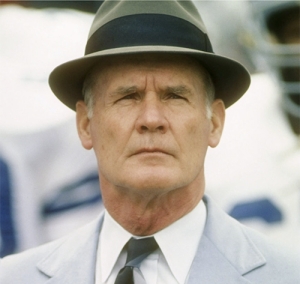
Tom Landry. Tom Landry was the first coach of the Dallas Cowboys. During his long and illustrious coaching career, he created many new formations and methods, such as the now popular 4–3 defense and the “flex defense” system. He turned in 20 consecutive winning seasons and won two Super Bowl titles.
Quote: “There’s a misconception about teamwork. Teamwork is the ability to have different thoughts about things; it’s the ability to argue and stand up and say loud and strong what you feel. But in the end, it’s also the ability to adjust to what is the best for the team.”
Lesson: Not talking and not listening are the two biggest wastes in A/E firms.
Quote: “Today, you have 100% of your life left.”
Lesson: There are plenty of things in the world to make you gnash your teeth and wring your hands, but leading firms that do great things for society isn’t one of them.
Quote: “First become a winner in life. Then it’s easier to become a winner on the field.”
Lesson: We are people first, principals second.
Quote: “I’d rather have a second-best decision diligently pursued than a first-best decision lackadaisically pursued.”
Lesson: Often it’s not the strategy that’s bad, it’s the execution.
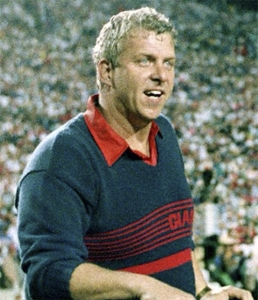
Bill Parcells. Also known as “the Big Tuna,” Bill Parcells was an NFL coach for 19 seasons. He rose to prominence as the head coach of the New York Giants, which he led to two Super Bowl titles. He is the only coach in NFL history to lead four teams to the playoffs and three teams to a conference championship game.
Quote: “If the players don’t trust the coach, it is a problem, and vice versa.”
Lesson: Trust is the bedrock of a healthy organization.
Quote: “I think confrontation is healthy because it clears the air very quickly.”
Lesson: Without healthy conflict, gaining buy-in is impossible.
Quote: “Accept false steps as opportunities to learn. It’s one thing to hate failure, it’s another to fear it.”
Lesson: Have a healthy relationship with “wrongness.” Being wrong isn’t the bedbug of intellect. It’s how we learn.
Don’t let these Thanksgiving leftovers go to waste!
To learn more about Morrissey Goodale’s leadership training and development programs, call Mark Goodale at 508.254.3914 or send an email to [email protected].
Four Factors to Watch
1. Supply Chain
Although far from running at normal levels, global logistics systems showed signs of easing over the past few weeks. Some freight industry leaders and economists are saying that the worst is past us, particularly in Asia, but there are still many challenges ahead, and we continue to be at the mercy of COVID-19 outbreaks as well as extreme weather events.
The container ship backlog in the port of Los Angeles, something that was uncommon before the pandemic, can be a representative measure of the ongoing supply chain bottlenecks that have had a significant impact in the U.S. economy. On November 19, there were a record high 86 container ships anchored offshore. That number came down to 56 on Friday, November 26, according to the Marine Exchange of Southern California.
2. Jobless Claims
Weekly jobless claims for the week ending November 20 fell 71,000 from the previous week, down to 199,000, the lowest level in 52 years and below the 2019 weekly average of 219,000. As expected, with workers in short supply and many job openings, layoffs are dropping.
3. U.S. Gross Domestic Product
The latest Bureau of Economic Analysis (BEA) third-quarter GDP estimate showed an annual rate increase of 2.1%. The report also showed a revised increase in wages and salaries of $301 billion, more than 50% higher than the previous estimate.
4. COVID-19
The seven-day moving average of new cases reported on November 23 by the CDC increased 10% vs. the previous week (from 86,000 to 94,200), reaching the highest value in the last 45 days. According to the CDC, 70% of the U.S. population has received at least one vaccine dose, and 19% of those fully vaccinated have received a booster dose.
Subscribe to our Newsletters
Stay up-to-date in real-time.










